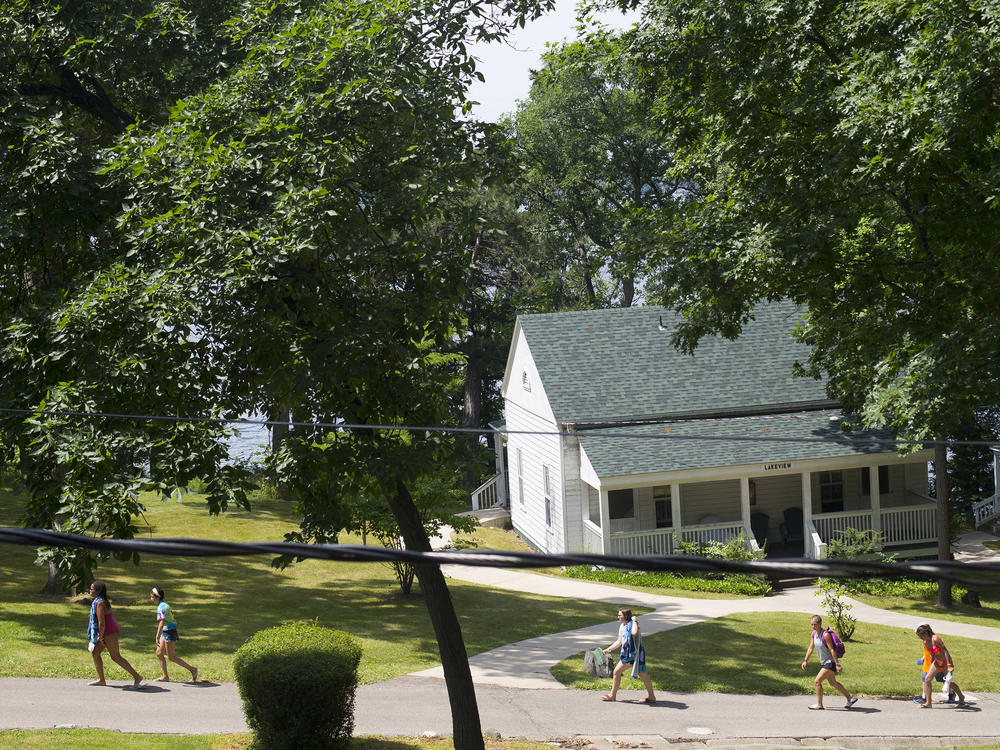Section Branding
Header Content
Here's What The CDC Says Summer Camps Should Do To Prevent And Respond To COVID Cases
Primary Content
Last year, the coronavirus pandemic forced many summer camps to close and families to change their plans. Now, new guidance from the Centers for Disease Control and Prevention says camps will be able to open for in-person activities, provided they take specific steps to prevent the spread of COVID-19.
The guidance was released over the weekend and applies to both day and overnight camps. It emphasizes the importance of wearing masks, social distancing and getting vaccinated as soon as possible.
"Consistent and layered use of multiple prevention strategies can help camps open safely for in-person activities; protect children, families, and staff; and slow the spread of the virus that causes COVID-19," it reads.
While fewer children have gotten sick with COVID-19 than adults, the CDC explains, they can still get infected and spread the virus to others. The guidance notes the key role that camps play in individuals' social, emotional and physical development, and goes on to outline strategies they can use to maintain healthy environments and prepare to respond to potential infections.
The CDC stressed this guidance is intended to supplement state and local health measures with which camps must comply, and its implementation should be tailored to the specific needs of each community.
"Camp administrators, working with local public health officials, should assess the level of community transmission to understand the burden of disease in the community," it says. "The higher the level of community transmission, the more likely that the virus that causes COVID-19 will be introduced into the camp facility from the community, which could lead to in-camp transmission if layered prevention strategies are not in use."
While all American adults are now eligible to get vaccinated, and a growing number have done so, none of the three COVID-19 vaccines available in the U.S. have been authorized for use in children under the age of 16.
For that reason, the guidance says that camps must continue prevention measures such as mask-wearing and physical distancing even after employees have been fully vaccinated.
Everyone in camp facilities must wear well-fitting masks at all times, with exceptions for certain activities such as eating, drinking and swimming. The guidance recommends disposable masks or cloth masks with two or more layers of fabric, and says they should be stored properly and washed regularly. Staff and campers are urged to have multiple masks on hand to replace ones easily that get wet or dirty.
Camp policies must promote physical distancing indoors and outdoors in line with the current recommendations for K-12 schools, the guidance adds.
It suggests creating cohorts, or groups of campers and staff that stay together throughout the day, and limiting exposure between them. Camps should require at least 3 feet between campers within a cohort, while 6 feet of distance is required in other situations, including during mealtimes and between campers and staff.
Most activities should take place outdoors, and camps should adopt ventilation and disinfection practices for indoor spaces. They should also teach and reinforce hygiene practices such as frequent hand-washing and limiting sharing of objects.
The guidance discourages close-contact and indoor sports, noting the increased risk of spreading COVID-19 in those situations.
It also suggests modifying a number of activities and traditions for safety's sake, such as avoiding group activities where distance cannot be maintained, limiting nonessential visits from other individuals and organizations, and performing activities such as singing and chanting outdoors only.
Campers can take trips to places where they will not mix with others outside of the camp population, such as hiking trails or beaches, it adds.
Several sections of the guidance discuss communication strategies, such as signage and announcements for campers and outreach to their families.
There are specific recommendations for what to do if someone gets sick while at camp, and when campers or staff should stay home. An additional section for overnight camps discusses screening testing, symptom checking and contact tracing policies in more detail.
It also outlines steps campers should take before their arrival, such as quarantining in line with travel guidance and getting either vaccinated or tested within a certain time frame. Upon their return home, campers and staff who are not fully vaccinated should get a viral test after three to five days and self-quarantine for one week.
Copyright 2021 NPR. To see more, visit https://www.npr.org.

